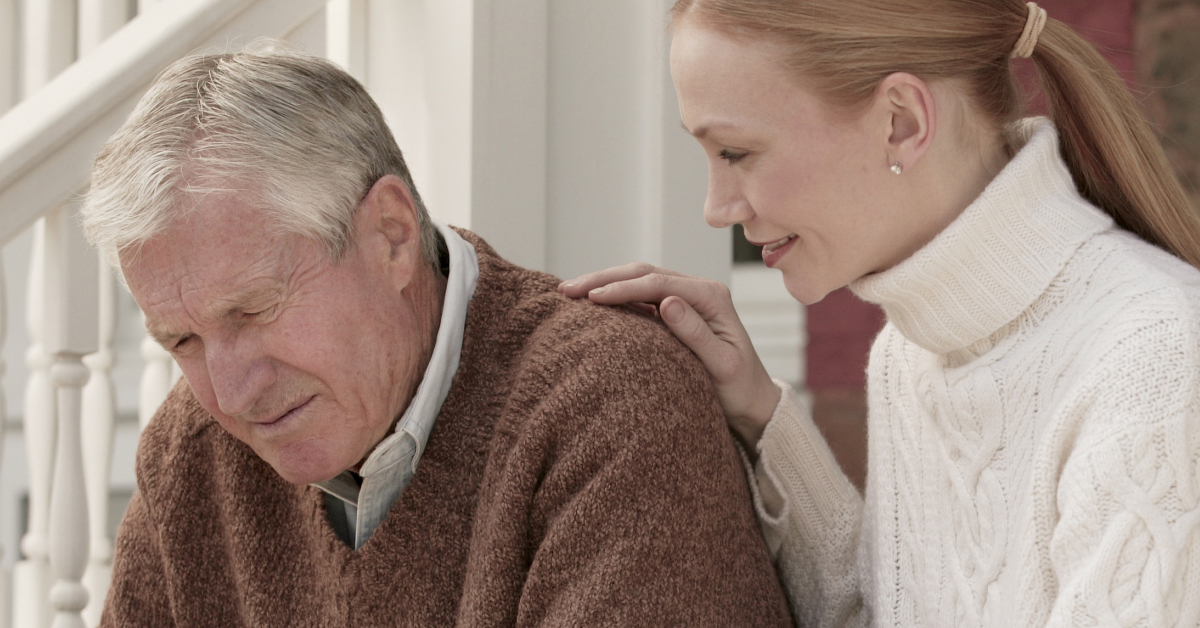
Why Patients with Lymphoma Are Less Likely to Receive Hospice
The American Society of Clinical Oncology describes hospice as an essential component of end-of-life (EOL) care.1 As such, hospice utilization among patients with hematologic malignancies merits scrutiny as an area where hospice utilization is traditionally lower than with solid malignancies. Recently, Oreofe Odejide, MD, of the Dana-Farber Cancer Institute, and colleagues published an analysis of hospice utilization among patients who died with lymphoma, and they made recommendations for improving patient care.2
Researchers analyzed Medicare records for 18,777 patients who died with indolent non-Hodgkin lymphoma (NHL), aggressive NHL, or mantle cell lymphoma. Compared to all Medicare beneficiaries who died with cancer, patients with lymphoma proved 23% less likely to receive hospice, and they tended to have fewer days in hospice. Overall, only 41.6% of patients who died with lymphoma received their hospice benefit, and more than a third of them received hospice for only one or two days. As with hospice utilization with solid malignancies, hospice utilization among patients with lymphoma appears to be on the rise compared to previous decades, but the added utilization seems to be fueled by extremely short enrollments – too short for patients to receive all the advantages of hospice.
Hospice Improves Quality of Life
Hospice has been associated with improved quality of life at the end of life and reductions in the risk of psychiatric illness among bereaved caregivers.3-5 Researchers have even observed a dose-response relationship, highlighting the importance of hospice enrollments lasting longer than two weeks. Medicare pays 100% for in-home clinician services, medications, equipment, and supplies related to palliative care for the hospice diagnosis. Patients in hospice have fewer rehospitalizations, fewer intensive care unit admissions, and lower costs.6
Odejide and colleagues hypothesized that these patients may utilize hospice less because a significant portion of lymphoma cases are considered curable. This hypothesis was disproven by the fact that patients with potentially curable, aggressive lymphomas had higher enrollment rates (44.3%) than incurable, indolent lymphomas (38.7%). Their data suggests that the potential for cure at the time of death was less of a factor in enrollment rates than the aggressiveness of the disease. This is consistent with research in breast cancer also finding that aggressiveness increases hospice enrollment more than the disease being considered curable or incurable.7
Patients with Lymphoma Are Less Likely to Choose Hospice
Researchers also hypothesized that patients with lymphoma may choose hospice less because lymphomas are less likely to cause chronic pain compared to other cancers. It may be helpful for patients to receive a tailored hospice explanation wherein patients and caregivers learn that hospice can provide assistance with caregiving to relieve the family, emotional support, as well as symptom management for appetite, breathing, energy conservation, etc. Doctors and discharge planners can always call to have a nurse visit and explain hospice services and criteria.
The authors also hypothesized that Medicare’s prohibition of curative treatments during hospice enrollment may discourage these patients. However, they found low enrollment rates even among patients not receiving chemotherapy at EOL. Furthermore, the prohibition of curative treatments tends to be a bit overstated, as patients are free to discharge from hospice and initiate more curative treatments at any time.
In Conclusion
Finally, the researchers hypothesized that prognostication proves more challenging in lymphoma, and this results in fewer timely EOL discussions. Previous research correlates timely EOL discussions with greater hospice enrollment and improved quality of life with no adverse emotional effects.8,9 The authors suggest that oncologists determine relevant clinical triggers for EOL discussions rather than prognostic certainty. This way, patients will have received the information needed for them to be informed participants in clinical decision-making even when the prognosis is uncertain.
References:
- Peppercorn J. Smith T, Helft P, et al. American Society of Clinical Oncology Statement: Toward Individualized Care for Patients With Advanced Cancer. J Clin Oncol. 2011; 29 (6): 755-760.
- Odejide O, Cronin A, Earle C, et al. Hospice use among patients with lymphoma: impact of disease aggressiveness and curability. JNCI J Natl Cancer Inst. 2016; 108 (1): dvj280.
- Wright A Keating N, Balboni T, et al. Place of death: correlations with quality of life of patients with cancer and predictors of bereaved caregivers’ mental health. J Clin Oncol. 2010; (29): 4457-4464.
- Kris A, Cherlin E, Prigerson H, et al. Length of hospice enrollment and subsequent depression in family caregivers: 13-month follow-up study. Am J Geriatr Psychiatry. 2006; 14 (3): 264-269.
- Teno J, Clarridge B, Casey V, et al. Family perspectives on end-of-life care at the last place of care. JAMA. 2004; 291 (1): 88-93.
- Obermeyer Z, Makar M, Abujaber S, et al. Association between the Medicare hospice benefit and health care utilization and costs for patients with poor prognosis cancer. JAMA. 2014; 312 (18): 1888-1896.
- O’Connor T, Ngamphaiboon N, Groman A, et al. Hospice utilization and end-of-life care in metastatic breast cancer patients at a comprehensive cancer center. J Palliat MEd. 2014; 18 (1): 50-55.
- Mack J, Cronin A, Keating N, et al. Associations between end-of-life discussion characteristics and care received near death: a prospective cohort study. J Clin Oncol. 2012; 30 (35): 4387-4395.
- Wright A, Zhang B, Ray A, et al. Associations between end-of-life discussions, patient mental health, medical care near death, and caregiver bereavement adjustment. JAMA. 2008; 300 (14): 1665-1673.





